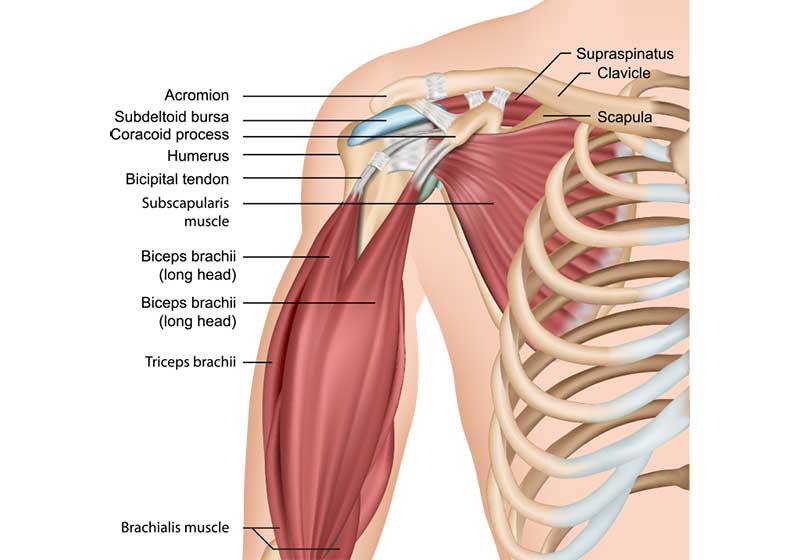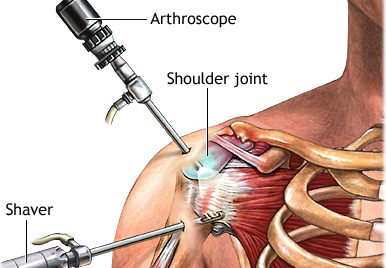Shoulder Arthritis is the gradual wear and tear of cartilage, more commonly in the ball and socket joint than acromioclavicular, which results in the loss of a smooth gliding motion for the joint and causes the associated pain and restricted movement.
Commonly misunderstood as the bone-on-bone traction, arthritis is actually the degradation of the cartilage which happens over time in stages:
Stage 1 – Cartilage softens
Stage 2 – Surface cracks develop
Stage 3 – Deterioration and flaking, known as ‘fibrillation’
Stage 4 – Cartilage wears away to expose the bone surface
There are many forms of Shoulder Arthritis with varying causes, with some of those reasons still unknown. Common causes of Shoulder Arthritis are:
Osteoarthritis – the most common cause of Shoulder Arthritis, this is a degenerative joint disease which affects all cartilage and joints in the body. It usually affects people over the age of 50.
Rheumatoid Arthritis – an autoimmune disorder in which the immune system attacks healthy cells such as the lining of joints. It is an inflammatory condition and often manifests symmetrically, affecting both shoulders at once. Rheumatoid Arthritis is more common in women, and often affects the small joints of the body first, such as hands and fingers before involving the larger lower limb joints.
Post-Traumatic Shoulder Arthritis – can develop after an injury to the shoulder, such as a fracture, dislocation or other damage.
Rotator Cuff Tear Arthropathy – a large, long-term rotator cuff tear can displace the bones of the ball and socket joint and cause bone-on-bone contact, leading to arthritis. Healthy rotator cuff tendons hold the ball and socket joint in place.
Avascular Necrosis – when blood supply to the shoulder joint is disrupted because of disease or injury, the bone slowly begins to collapse which leads to destruction of the cartilage and joint.
Signs of Shoulder Arthritis may include:
Shoulders have two joints. The larger is the ball and socket joint (glenohumeral) which connects the ball-shaped end of the humerus (upper arm bone) to the depressed socket in the glenoid (part of the scapula). The second joint is the smaller, acromioclavicular joint, where the clavicle (collar bone) and scapula meet.
These, and every other joint in the body have cartilage, a 2 to 3-millimeter thick layer of tissue designed to make contact between bones softer and the movement of the joint smooth.
Ball and socket joints are a special type of joint allowing greater freedom of movement than any other joint – the only other ball and socket joint in the body is found in the hip.

Early management of Shoulder Arthritis is usually nonoperative and could include:
When nonoperative treatments are not offering enough relief, surgical options can be considered.
Arthroscopic Shoulder Debridement – a minimally invasive key hole approach taking a tiny camera (arthroscope) and surgical tools into the joint via a small incision to clean out debris in the joint. This surgery best suits less severe cases and usually offers 12 to 24 months pain relief, so is not a permanent solution.
Shoulder Replacement – helps to relieve bone-on-bone arthritis for many years.
There are differing types of shoulder replacements suited to varying presentations:
Resection Arthroplasty – a procedure for Arthritis of the acromioclavicular joint, where a small amount of collarbone is removed to allow space for scar tissue to form in place of cartilage. It can be performed via open surgery or arthroscopically (key hole), depending on the individual situation.
For many patients, surgery is a successful, permanent treatment for Shoulder Arthritis, which is an ongoing, degenerative condition.

If you are looking to book an appointment, please call us on